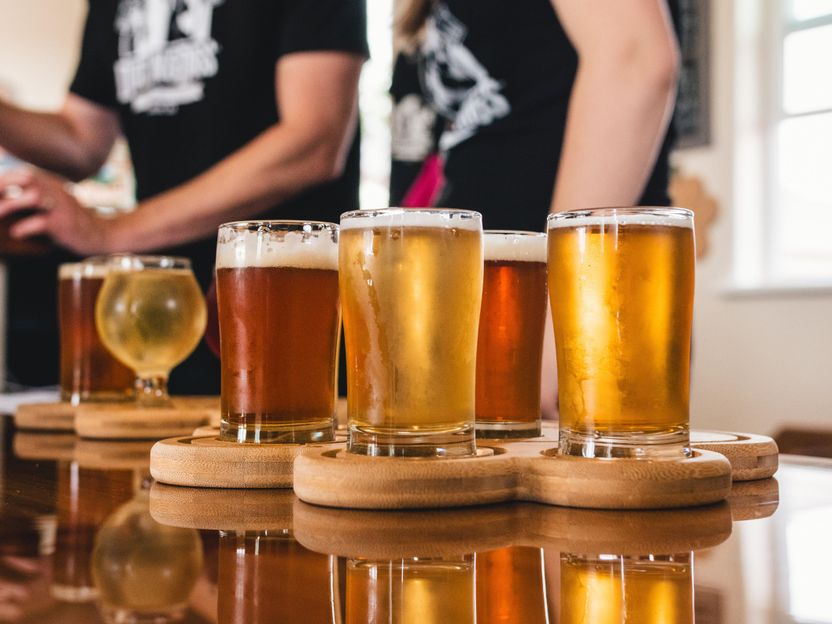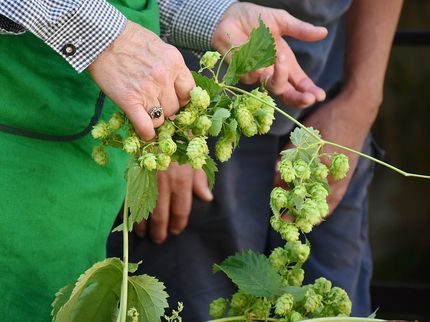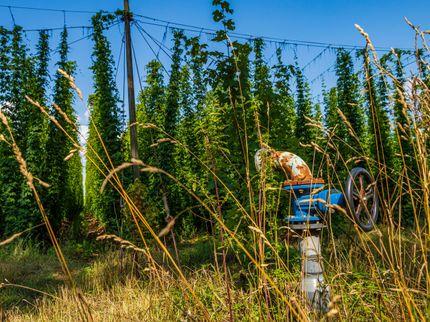Ten facts about German beer
Traditionally, the 23rd of April each year is dedicated to beer. This is because the Beer Purity Law was promulgated in Ingolstadt, Bavaria, on April 23, 1516. It stipulates that only water, malt, hops and yeast may be used for brewing. The Beer Purity Law stands for the preservation of a time-honored craft technique and is also the oldest food law in the world that is still valid today. In Germany, it has developed over centuries into an art of brewing that is respected worldwide: From just four natural ingredients, a globally unique variety of around 50 different varieties and more than 7,500 individual beer brands is created day after day in around 1,500 German breweries.

Photo by Meritt Thomas on Unsplash
1. there are now more than 7,500 beer brands in germany
In Germany alone, there are now more than 7,500 different beer brands. Every week, at least one new beer hits the market. Nowhere is the beer market as varied as in Germany, and in no other country do consumers have a wider choice of beers with and without alcohol. So you could try a new beer from German breweries every day for more than 20 years.
2 The south has the highest density of breweries
In a comparison of the German states, Bavaria is clearly in the lead with 631 breweries (2021). This is followed by Baden-Württemberg in second place with 212 breweries and North Rhine-Westphalia in third place with 143 establishments, according to the Federal Statistical Office. Lower Saxony and Bremen are in fourth place with a total of 85 breweries, while Hesse/Rhineland-Palatinate/Saarland and the Free State of Saxony share fifth place with 79 establishments each.
3 German brewing is a cultural heritage
Craft beer brewing has been included in Germany's intangible cultural heritage since March 2020. At the request of the German Brewers Association and other organizations, and on the recommendation of the German UNESCO Commission's Committee of Experts, the Conference of Ministers of Education and Cultural Affairs of the German states and the Federal Government Commissioner for Culture and the Media in the Chancellor's Office decided to include the German art of brewing in the nationwide list. The UNESCO committee of experts paid tribute to craft beer brewing, saying it had proved "highly versatile" in recent years in particular. The excellent networking among German brewers and the numerous professional contacts abroad also deserve positive mention, it said. "Above all, the regional roots of beer brewing lead to a close bond between people, which is further strengthened by communal rituals such as festivals, regulars' tables, as well as by associations," the committee said in its statement.
4. Non-alcoholic beers on growth track
Non-alcoholic beers and beer-based mixed drinks have become increasingly popular in Germany in recent years. Germany's brewers are world leaders in the production of high-quality non-alcoholic beers. Since 2007, production of non-alcoholic beer varieties in Germany has more than doubled - to a good 680 million liters in 2021, which means they now account for 8 percent of the market. The Brewers Association reckons that one in ten beers brewed in Germany will soon be alcohol-free. There are now more than 800 different non-alcoholic beer brands nationwide. A survey by the Brewers' Association showed that consumers particularly appreciate the good taste, low calorie count and the use of exclusively natural raw materials in non-alcoholic beers. In addition to classic varieties such as Pils, wheat beer or Radler, more and more regional specialties such as Kölsch and Alt and also special beer varieties such as India Pale Ale are being brewed as non-alcoholic variants in Germany.
5. pilsner remains the most popular type of beer
The most popular type of beer among Germans continues to be Pilsner, with a market share of around 50 percent. Significant growth has recently been recorded by Helle, sales of which rose by 14 percent last year alone, according to industry estimates. With a market share of just over 9 percent, this variety, which is mainly found in the south of Germany, has moved up to second place among the most popular German beer brands. Mixed beer beverages take third place, followed by non-alcoholic beers in fourth place.
6. men and women - tastes are different
While men in particular often prefer Pilsner, the pale and non-alcoholic beers have more female fans, INSA found in a survey. Pilsner was named by 46 percent of men and 36 percent of women as their most popular type of beer. The pale preferred 11 percent of men and 15 percent of women. The difference is even greater for non-alcoholic beer, with 9 percent of men but 14 percent of women citing this variety as their most popular.
7 The brewing profession is becoming increasingly popular
German brewing training enjoys an excellent reputation worldwide. Young people from all over the world attend the German brewing universities in Berlin and Munich or train at the various technical colleges and master schools. Above all, the combination of craft and technical skills, as well as knowledge of biological and chemical processes, is inspiring more and more people to take up this profession: according to the German Federal Employment Agency, more than 400 (2019/2020: 387) prospective brewers started their three-year apprenticeship in the current training year 2021/2022. The fact that Germany is currently experiencing a renaissance of beer and brewing is also evident from the fact that both the number of home and hobby brewers and the community of trained beer sommeliers have grown steadily in recent years.
8. corona pandemic decimates the number of breweries
The Corona pandemic has also led to massive losses for the German brewing industry in 2021. According to the German Federal Statistical Office, domestic sales fell again by 3.4 percent to 7 billion liters compared to the record minus of the previous year. Compared to 2019, the year before the Corona crisis, domestic sales in 2021 were actually 8.6 percent lower. According to the German Federal Statistical Office, around 1,512 breweries were registered at the end of 2021. This means that 40 breweries had to cease operations compared to the previous Corona year (2019: 1,552). For most breweries in Germany, the Corona crisis has had a massive impact. The German brewing industry, which is dominated by medium-sized and family-run craft breweries, is the hospitality industry's closest partner. Accordingly, breweries have been hit hard by the lockdowns for pubs, restaurants, bars, cafés and hotels since 2020. Larger festive events, traditionally also an important area of business for breweries, have been canceled thousands of times. The relaxation of the Corona measures, which has now been implemented, has finally given the brewing industry a new perspective. The breweries hope that this will end one of the longest lean periods in their history - in the truest sense of the word.
9 Craft beer made in Germany
Craft beers are usually very aroma-intensive beers that use larger quantities of hops and often also new aroma hop varieties or special malts. These beers, which are characterized by regionality and a love of experimentation, are usually only produced in small quantities and are often served directly on site in brewpubs and bars. With their creative ideas and ever new variations, craft beer brewers succeed in creating very enjoyable and surprising beers. Although craft beers only have a market share of around one percent in Germany to date, the demand for these beers documents consumers' growing interest in beer diversity and craft brewing.
10 Regional specialties and old recipes in vogue
Market research shows that regional specialties such as country beers, sour beers or cellar beers, some of which are based on old or reinterpreted recipes, are rising in favor with consumers. One example is Berliner Weisse - the sour beer already admired by Napoleon's troops as the "Champagne of the North." With re-bred wild yeasts, it delights beer connoisseurs not only in the capital region. Another example is the unfiltered cellar beer or so-called Zwicklbier, which is becoming increasingly popular. Zwicklbier was originally the name given to the sample that the brewmaster took from the lager tank before filtering. Today, it is offered as a beer specialty by numerous breweries throughout Germany.
Note: This article has been translated using a computer system without human intervention. LUMITOS offers these automatic translations to present a wider range of current news. Since this article has been translated with automatic translation, it is possible that it contains errors in vocabulary, syntax or grammar. The original article in German can be found here.



























































